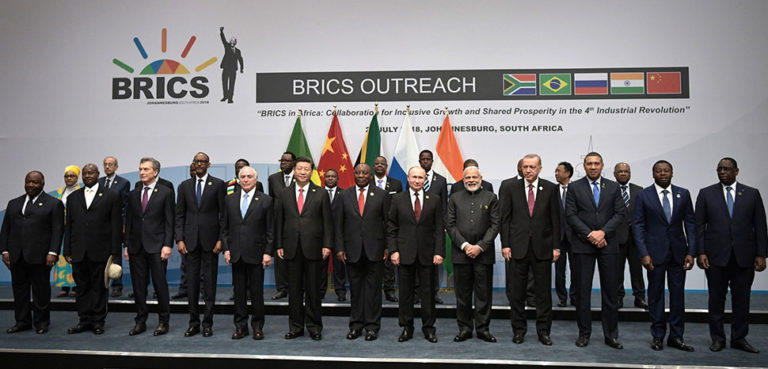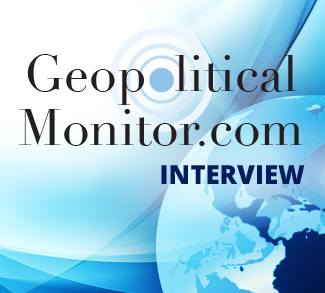While at the Carnegie Endowment for International Peace in Washington, India’s External Affairs Minister S. Jaishankar commented that New Delhi will not decouple from the US dollar, noting that it was not in his country’s economic interests. While noting that New Delhi was pursuing other means as well, he said: “[India has] never actively targeted the dollar. That’s not part of our economic, political, or strategic policy. Some others may have done so. What I will say is that we have a natural concern.”
Even if the US dollar’s retreat is based on economics and global trade concerns, India can’t escape the fact that the endorsement of de-dollarization by Russian President Vladimir Putin and Chinese President Xi Jinping risks impacting India’s growth and strengthening China’s grip across the globe.
When the 2024 BRICS Summit is held from October 22-24 in the Russian city of Kazan, India now has no choice but to join Vladimir Putin in welcoming Egypt, Ethiopia, Iran, Saudi Arabia, and the United Arab Emirates (UAE) into the fold.
Defenders of BRICS expansion have suggested that India’s association would ultimately benefit New Delhi in the long-term, but that is suspect. For example, India signed a deal to develop the Chabahar Port, which could have the benefit of pumping as much as $1 trillion of Indian exports into the Gulf region and Central Asia. However, the project has no direct association with BRICS and was achieved bilaterally. Second, BRICS-related trade growth is lopsided in China’s favor, as China’s size and foreign policy aggression signal it intends to influence other BRICS members rather than be more cooperative with its regional rival.
Analysts have long maintained that BRICS membership has an overall benefit, but aside from improved multilateral communication—which could be achieved in other regional fora—and the reduction of transaction costs, the potential addition of more members interested in de-dollarization not only harms India in the short term, but in allowing China to move its own economic agenda forward—even against political headwinds—it remains catastrophic.
Beyond the obvious China-Russia alignment, there are other concerns for India, with Brazil serving as a prime example. President Luiz Inácio Lula da Silva has been a consistent US dollar critic, and has painted dollar hegemony as destructive to the interests of the Global South, something that has been a major theme of Brazil’s G20 presidency. His trip to Shanghai in April of this year revealed an interest in an alternative currency, although details are light.
The European Union (EU) also sees this as a red flag. In a March briefing, the EU warned that while Saudia Arabia, Iran, and Egypt’s membership in BRICS isn’t much of an economic concern, it does complicate consensus decision making, noting that “the expansion should be seen beyond the purely economic effect, in the form of greater influence for the group,” and potentially undermining the stabilizing Bretton Woods order. In the context of international organizations such as the United Nations, patterns already exist where BRICS countries have collectively undermined efforts to end the Ukraine war. In contrast, however, the International Monetary Fund (IMF) has not done developing countries any favors by encouraging austerity measures, which have exacerbated sharp economic inequalities. Debt relief or restructuring to avoid such stark conditions have benefited Beijing over the past decade and more.
In the short term, there are also threats from the West. With the US presidential election set for November 5, the potential return of Donald Trump to the Oval Office could signal retaliatory measures from the authoritarian Republican leader, who threatened last month to impose 100 percent tariffs on imports from countries who decouple from the US dollar. And while Trump’s position on trade and foreign policy is well known, the situation in the Middle East has led to harsh consequences as a result of Iran’s attack on Israel. US sanctions now pose a threat to Indian tea and rice exports to Tehran, as does its efforts to co-lead the BRICS effort to remake the economic order.
More importantly, the US appetite for spending not only risks its credit standing, but the reliability of the US dollar as a stable currency. The viability of US debt is also in question as foreign investors are skittish about taking on additional risk: foreign-held debt has declined from a share of 33% in 2015 to just 22% as of October 2023.
With BRICS actually outpacing the G7, and Xi’s perceived control over the BRICS institution, it is not difficult to see a future with a currency that competes with the dollar. Movement in that direction is consequential for India, who has sought to play a middle ground between the G7 and the Global South. Modi’s muddy foreign policy makes clarity on this issue difficult, as it has had difficulty managing its relationship with Moscow and its alignment with G7 countries in hopes of curbing Chinese influence.
With Saudi Arabia, the UAE, Egypt, and Iran now in the fold, China drives the agenda as it can argue with conviction that smaller currencies are unlikely to mature on their own without the BRICS institution’s connectivity and the Chinese yuan can represent a reasonable US dollar alternative.
What India needs to be aware of, especially in the long term, is that the dollar is critical to trade in many emerging economies of the Global South, where New Delhi wants to be seen as a leader, as well as in developing countries where local currencies have collapsed, such as in Laos, Cambodia, and Argentina. Taking the dollar out of play and risking reliance on a potentially unstable currency could make many aspects of trade and finance difficult, especially since their external debts are often paid in dollars. Argentina recently reversed course under Javier Milei and has replenished its treasury with dollars.
India should realize now that it has embedded itself in an alliance that is seemingly detrimental to its interests. With its Quad partnership and G20 and G7 ties, it has shown itself to be a staple partner in the Indo-Pacific, especially to Japan. And as China continues to promote policies that are damaging to Indian influence, moving closer to the likes of Brazil, Russia, and China makes little sense.
Instead, India should move toward alignments that prevent economic disruption and strengthen economic stability. Arguably, its BRICS membership has done the opposite.
The views expressed in this article belong to the author(s) alone and do not necessarily reflect those of Geopoliticalmonitor.com.




